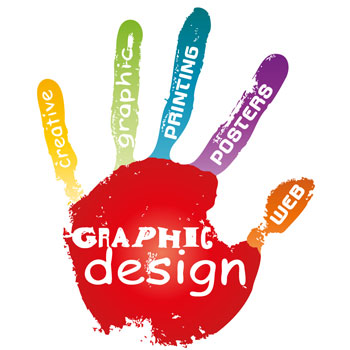Exhibit Design Search / Trade Show and Event Tips / Design, Lighting, and Graphics Tips /
What You Should Know about Graphic Design
 What You Should Know about Graphic Design
What You Should Know about Graphic Design
- The more information you provide, the more likely the final result will match your objectives
- Graphic designers work on an hourly rate
- It pays to remain loyal
- Trust your instincts!
When it comes to graphic design, I am an idiot. I'm not embarrassed to admit it, although I probably should be since I manage marketing for three divisions. Yet, there's rarely a day that I don't make graphic design decisions about our websites, sales literature, email marketing broadcasts, and trade show displays. Does my lack of graphic design expertise show? I certainly hope not.
Like most marketing managers, or any manager who understands his or her limitations, I rely on talented people, such as graphic designers. Not only do they understand the tools, such as Photoshop, Illustrator, or InDesign, but they spend their days immersed in graphic design issues. They understand the nuances and the trends. They remind me that this color text on that background is unreadable and that I've created visual clutter and confusion in my effort to show too much. If I ask them to add a "star burst" with a price, they guide me to a more contemporary solution that doesn't reek of 1980's clip art.
Four Valuable Lessons about Graphic Design
Fortunately, I've learn some valuable lessons over the years regarding graphic design, which I'll share. These aren't font, color, or layout tips. Remember, I'm an idiot. These are tips for anyone working with graphic designers, tips that will save you time, money, and slow the aging process.
It's Your Project, Part 1
I'd hate to be a graphic designer and work with most clients. Their expectations are unrealistic, their directions are vague, and their budget is pitiful. Most clients don't know what they want and expect the graphic designer to be psychic. Clients will use terms like "modern" and "visually striking" and "colorful" and expect those concepts to be transparent to anyone. They are not, any more than a "tree" looks the same to someone living in New England or the Pacific Northwest or Australia. Take ownership of your project. The more information you convey to the graphic designer, the more effort you put into prepping the project, the more likely the final result will match your objectives. Take the time to collect examples of ads, websites, and sales flyers that you like. Graphic designers are visual. They'll take those cues and use them to create your design. Too often I hear someone say, "I wanted something original and didn't want to influence the creative process by being too specific or showing them examples." Really? When did vagueness become a muse? Go ahead and be lazy. Just don't pretend that your laziness is a brilliant creative design strategy.
It's Your Project, Part 2
Let's say you decide to ignore my advice in Part 1. I'm not offended, but I am snickering behind your back. Your graphic designer loves and hates you. You've made their job much harder, but you've made them a little richer. Most graphic designers work on an hourly rate with incremental time minimums. You are now paying for pondering and investigating and false starts. Each back and forth is getting you closer to your perfect design, but you're paying for the privilege of having a graphic designer at your beck and call. If you work best following this process and have the budget, then hire a graphic designer full time or recognize that time is money, your money, and don't complain when you get the final bill. 
Mind Meld = Success and Increased Productivity
I've worked with the same graphic design firm for 15 years. They are good, which is the most important criteria. Equally important is that we now have a history together. They understand what I want. I understand how best to communicate with them. They understand the exhibit industry and, in fact, have gone out of their way to learn about the trade show business -- the graphic requirements, the shows, the publications, and much more. They have grown with us and have been instrumental in developing the graphics and branding for Visionary Designs, Sacagawea Portable Hybrid, Magellan Hybrid, and Perfect 10 Portable Displays.
The lesson . . . once you've found a graphic designer (or design firm) that you respect and like, it pays to remain loyal. They'll watch your back with ad agencies and suppliers. They'll guard your branding, even when you want to trample all over it because of a wild idea at 2 am with a shelf life of 24 hours. You'll develop a communication shorthand, which saves you money and them aggravation. Each project is still your project but getting from point A to Z, generally skips about half the alphabet.
Trust Your Instincts
It got you this far, and unless you have a history of flops, bad decisions, and marketing Hindenburgs, you've learned something valuable along the way. Be open to advice. But trust your instincts. If you are wrong, you're wrong. Heck, it was only a job in a down economy with little chance of future employment. ; - ). Finally, be amazed. There are lots and lots of people who call themselves graphic designers. Just as there are lots of people who call themselves investment advisors (GRRR!) or bankers (double GRRR!). When you find a talented graphic designer, one who syncs with your vision and your personality, hold on tight and be amazed.
Contact Us
For more information about trade show or event marketing, give us a call or Contact Us. We welcome the opportunity to assist you with your next show.
Mel White, CEI


